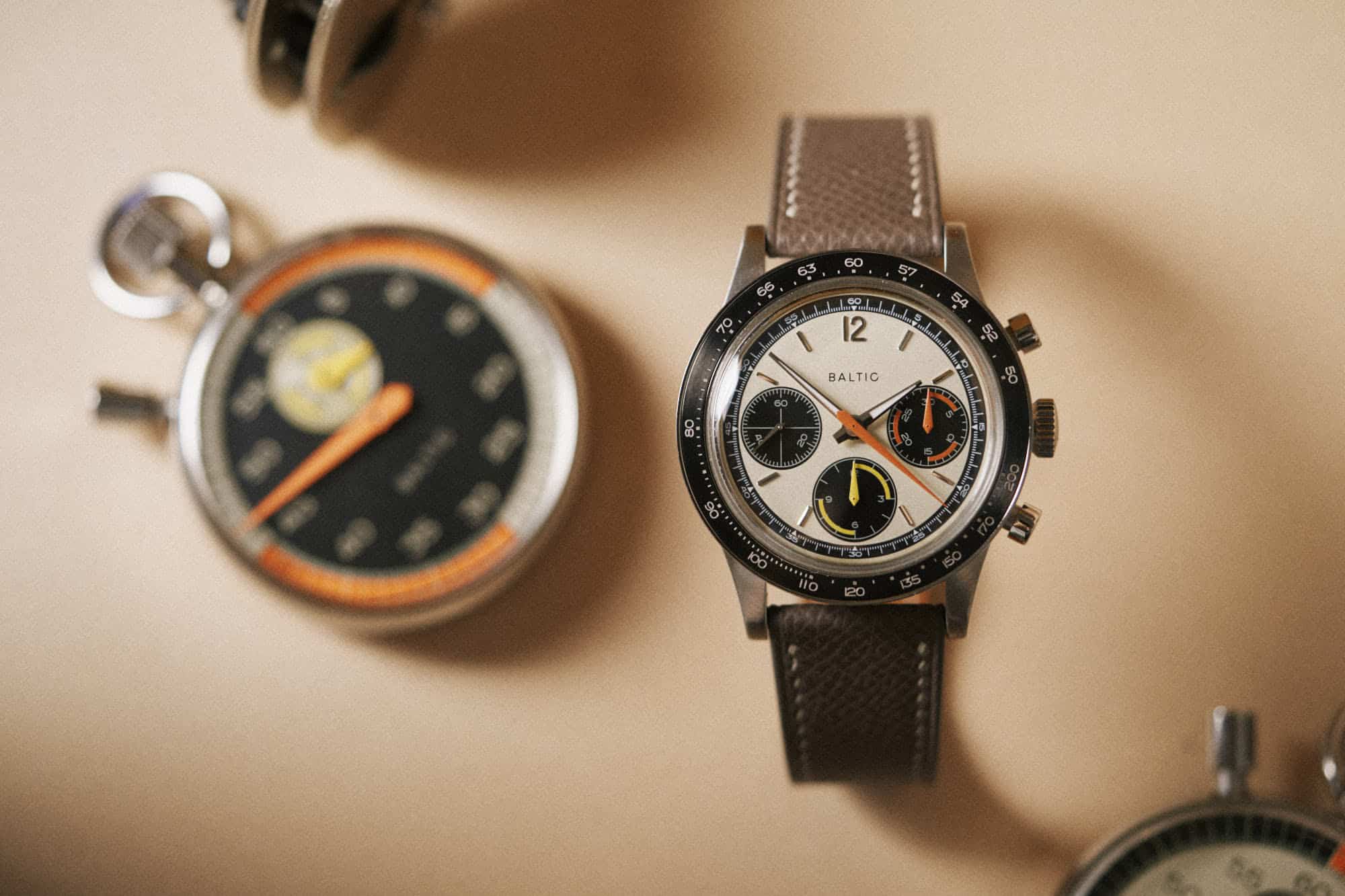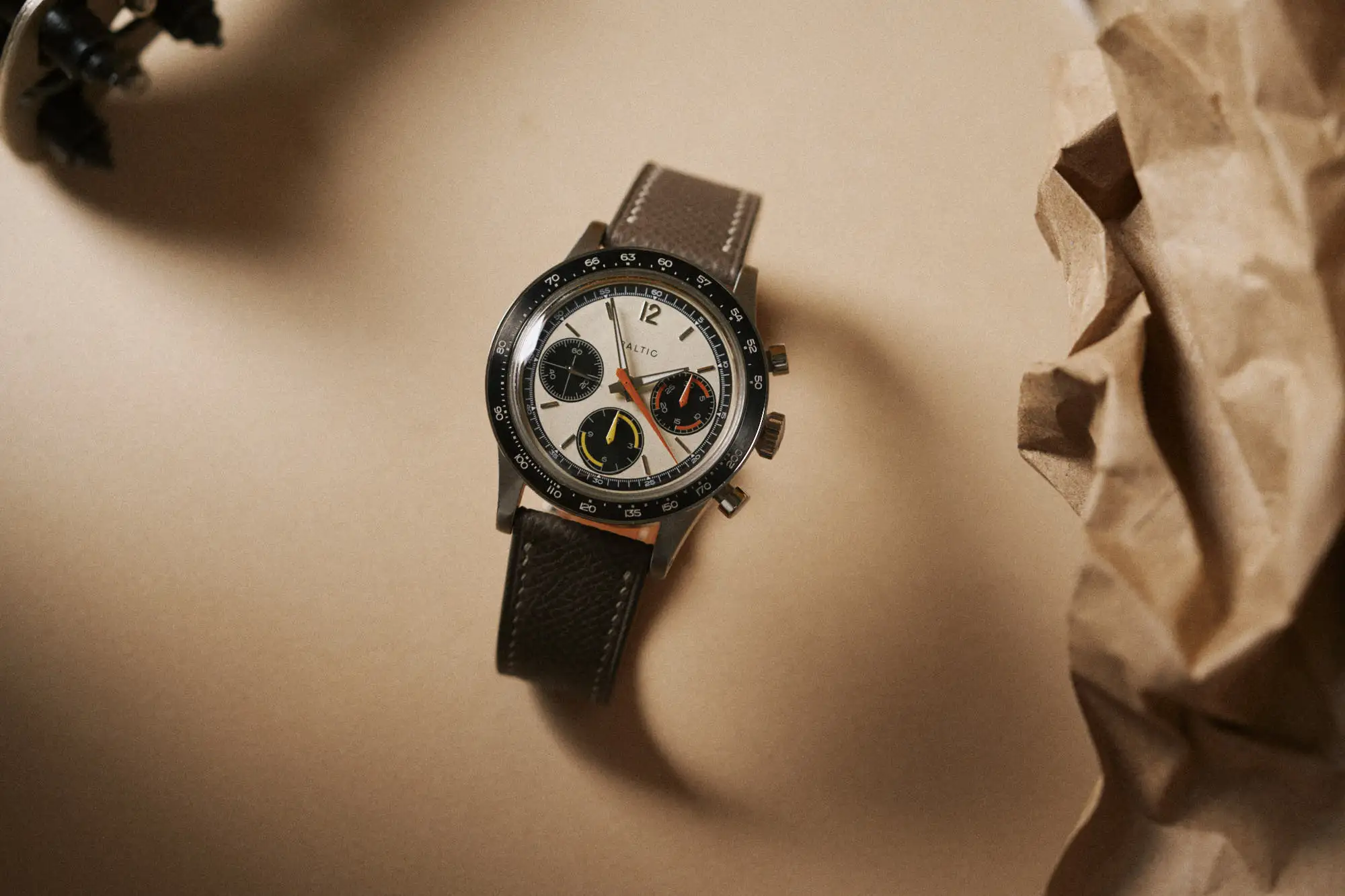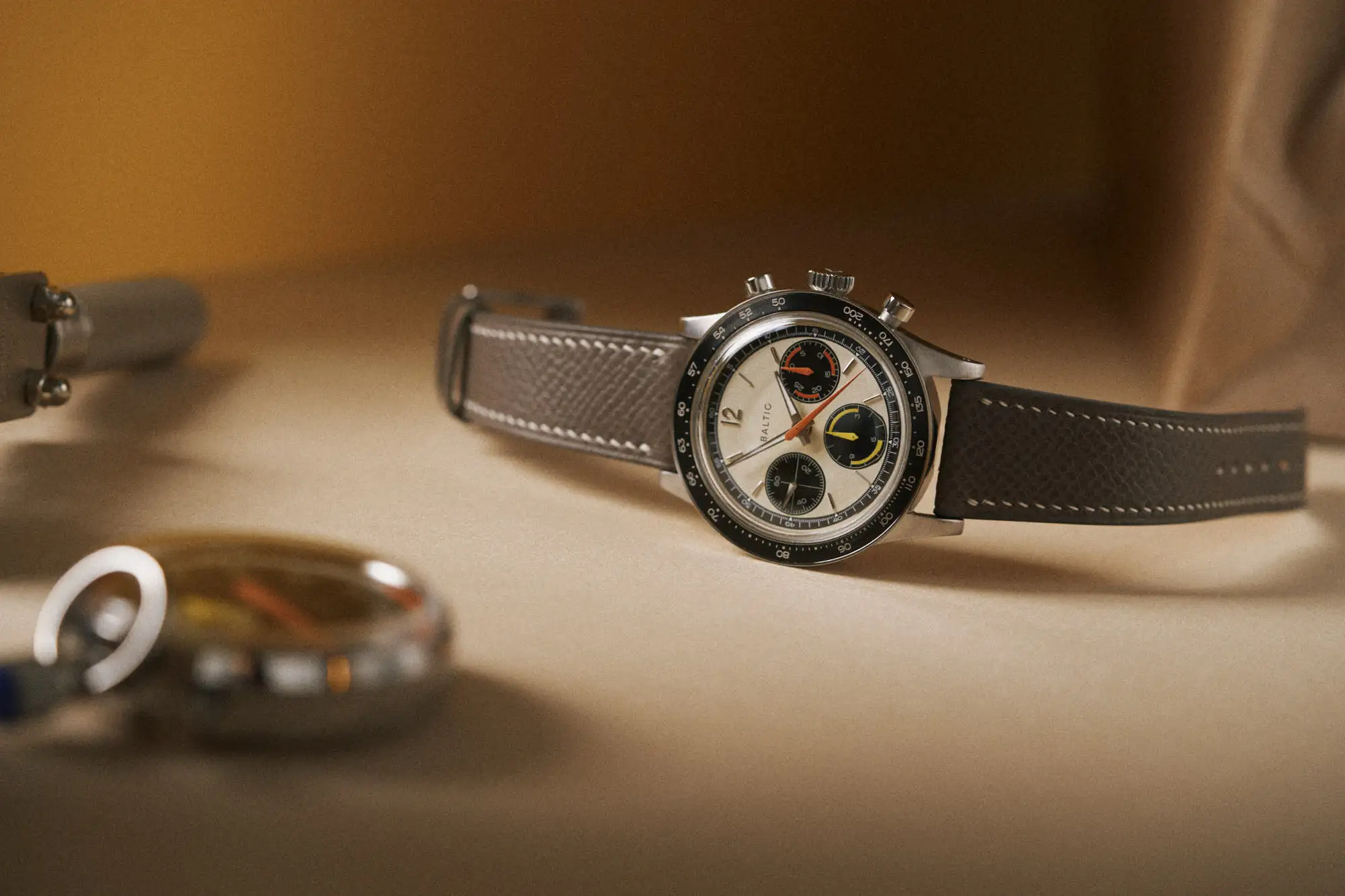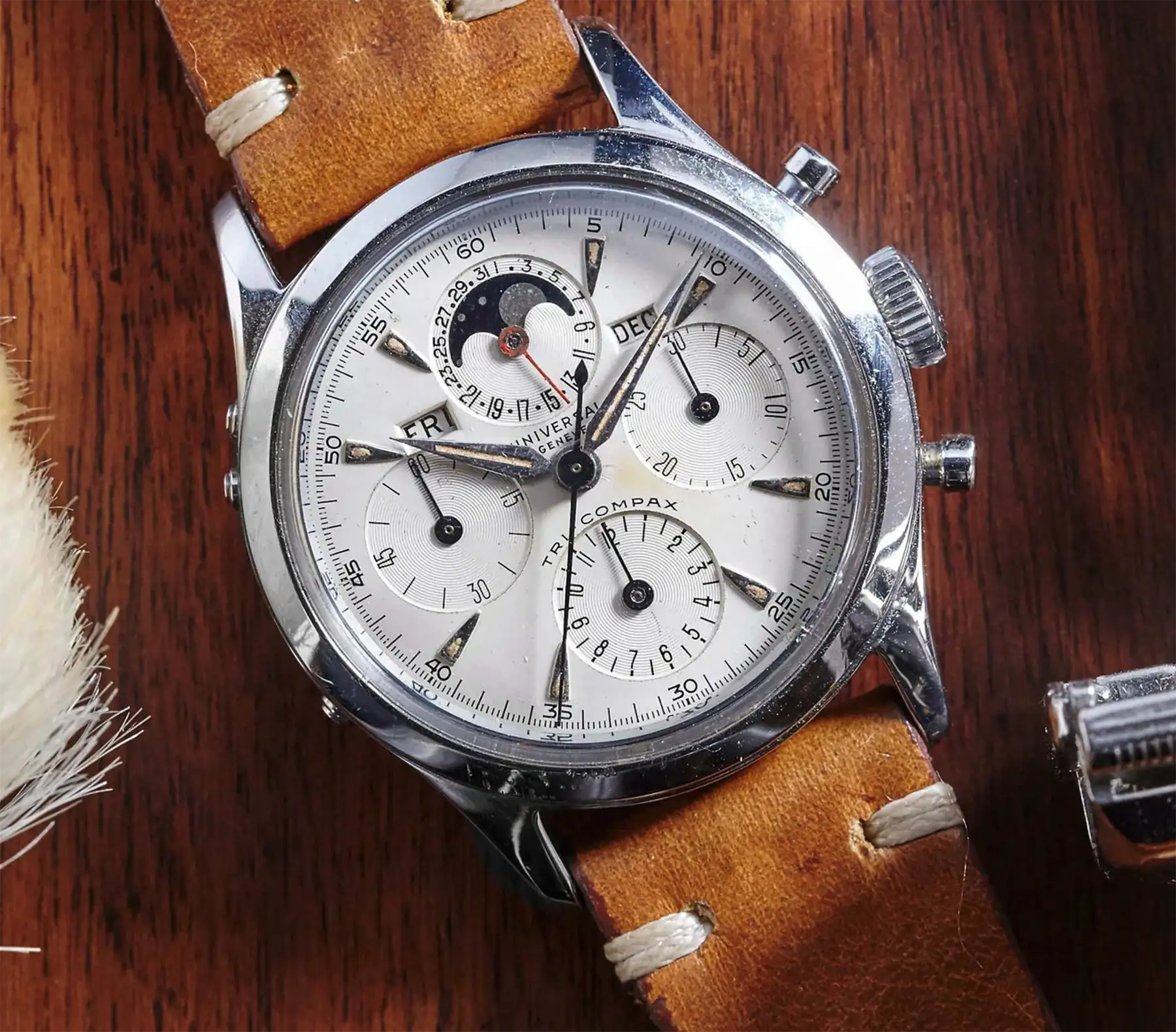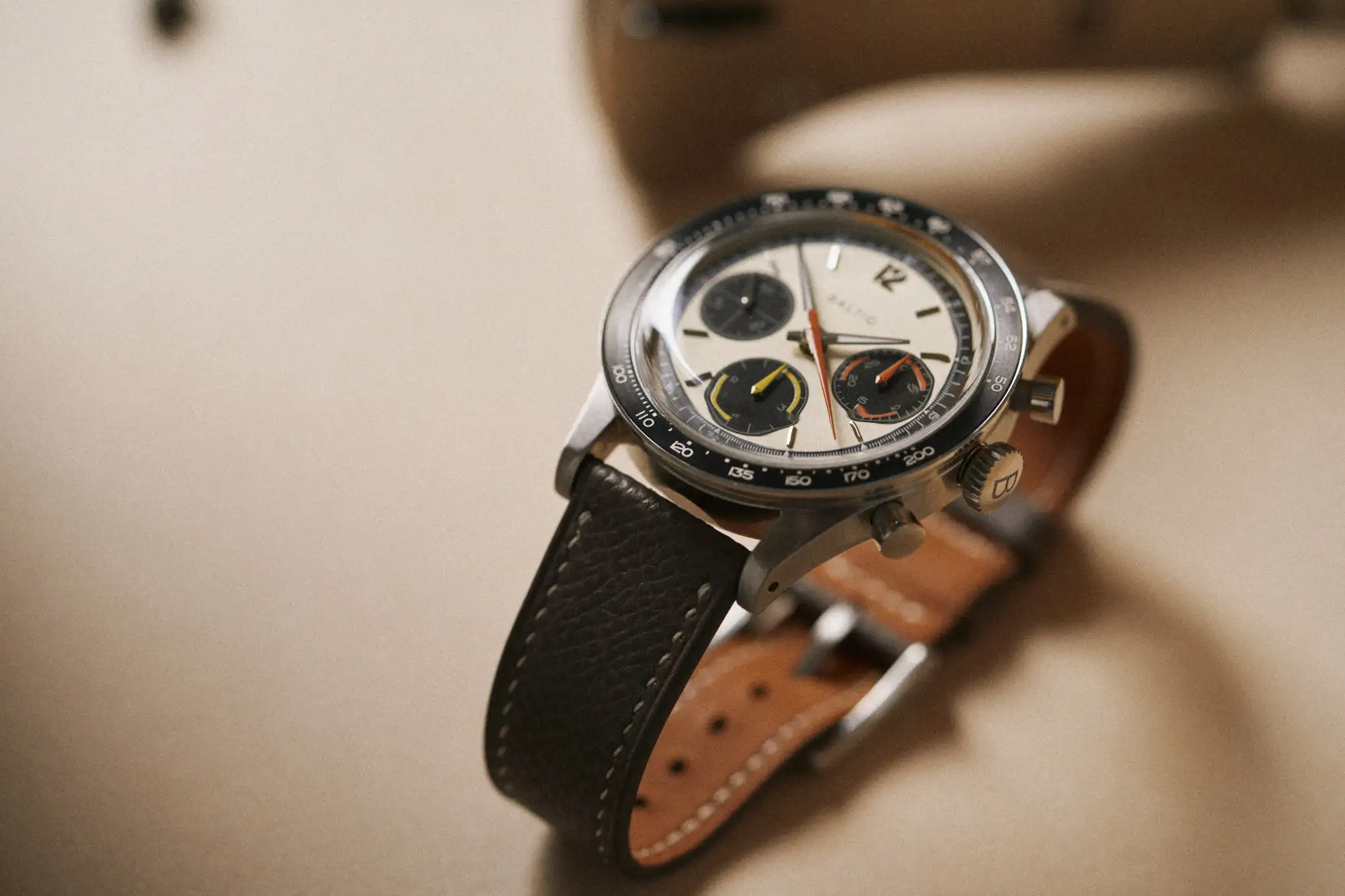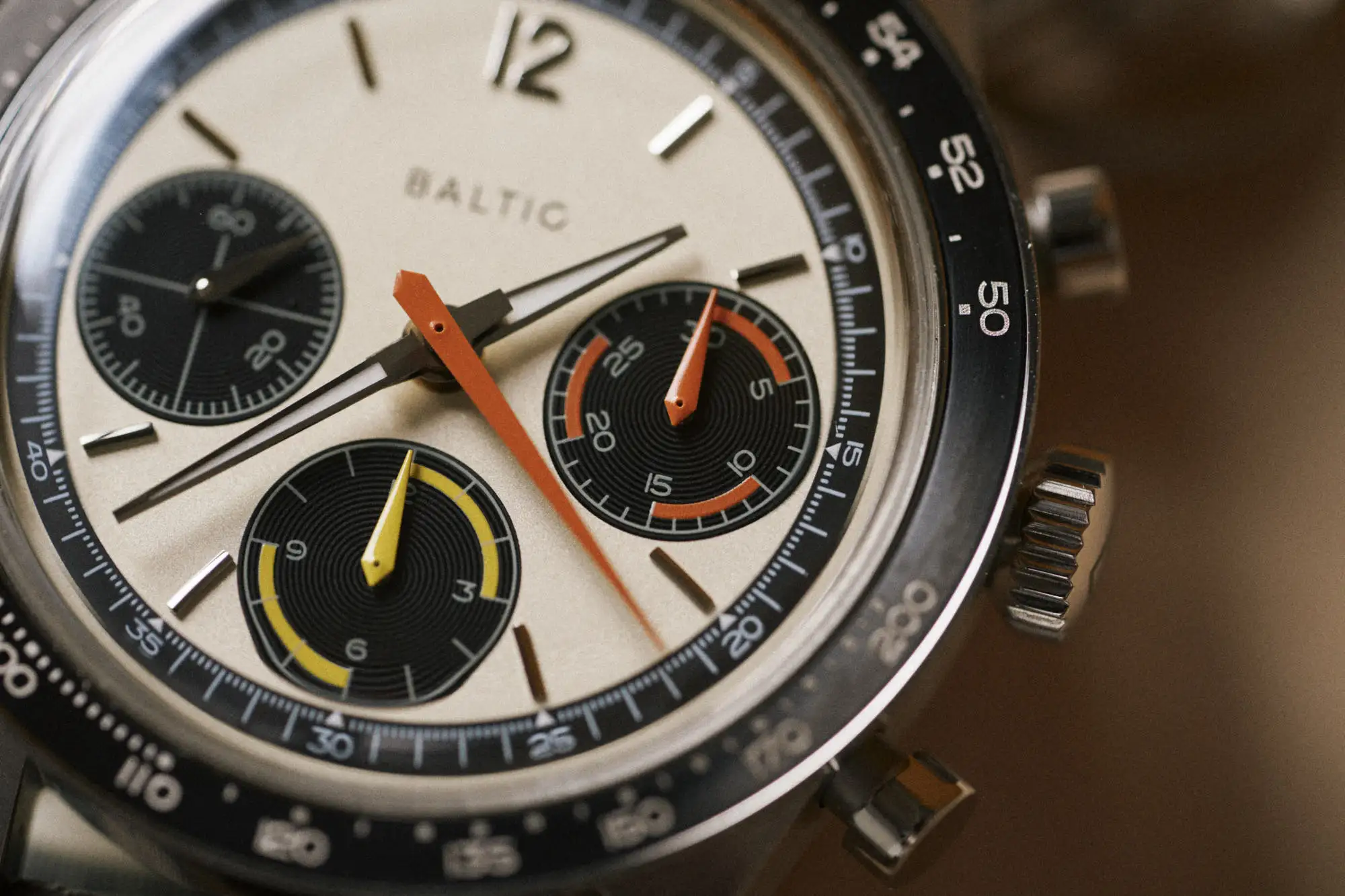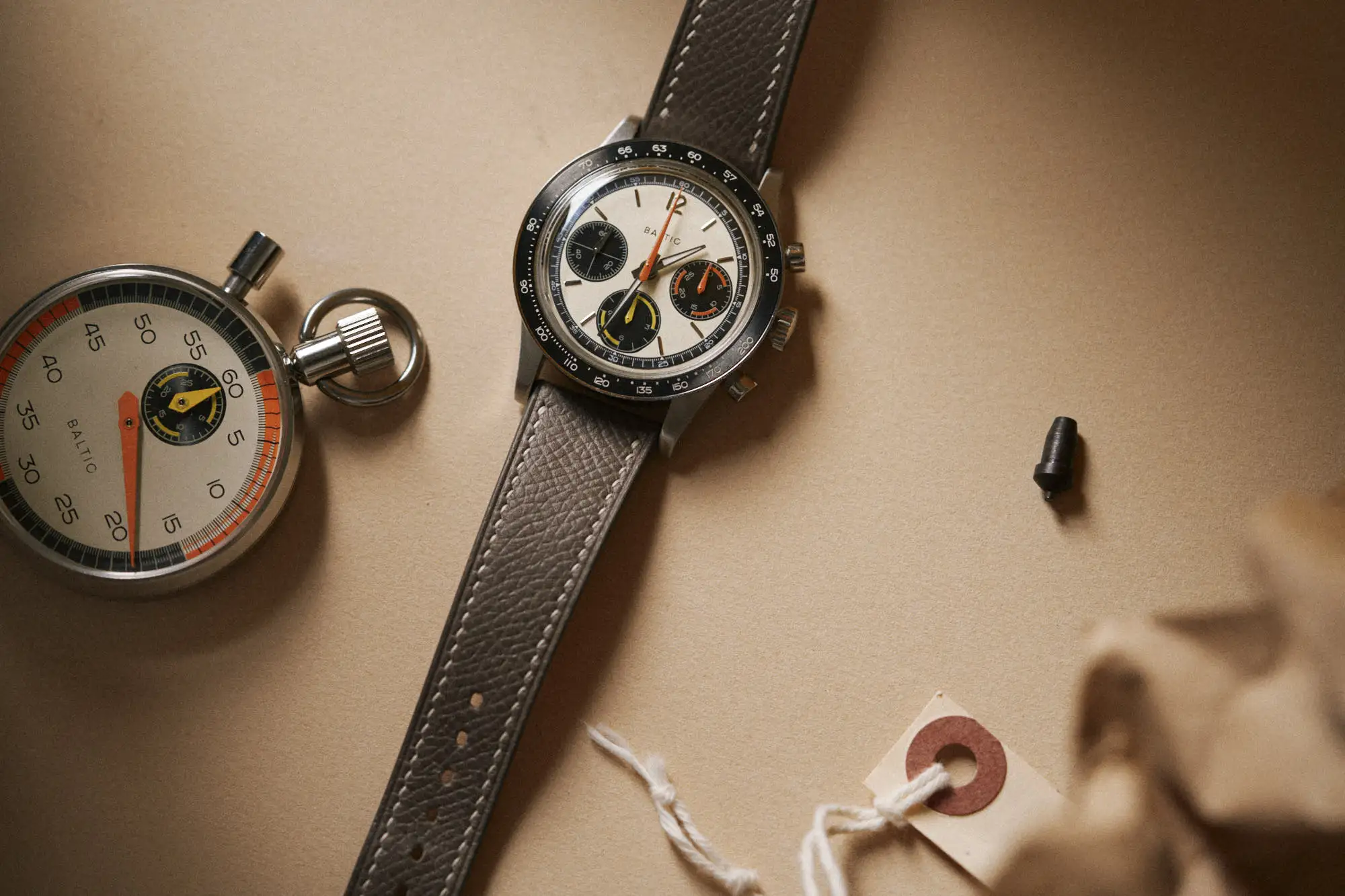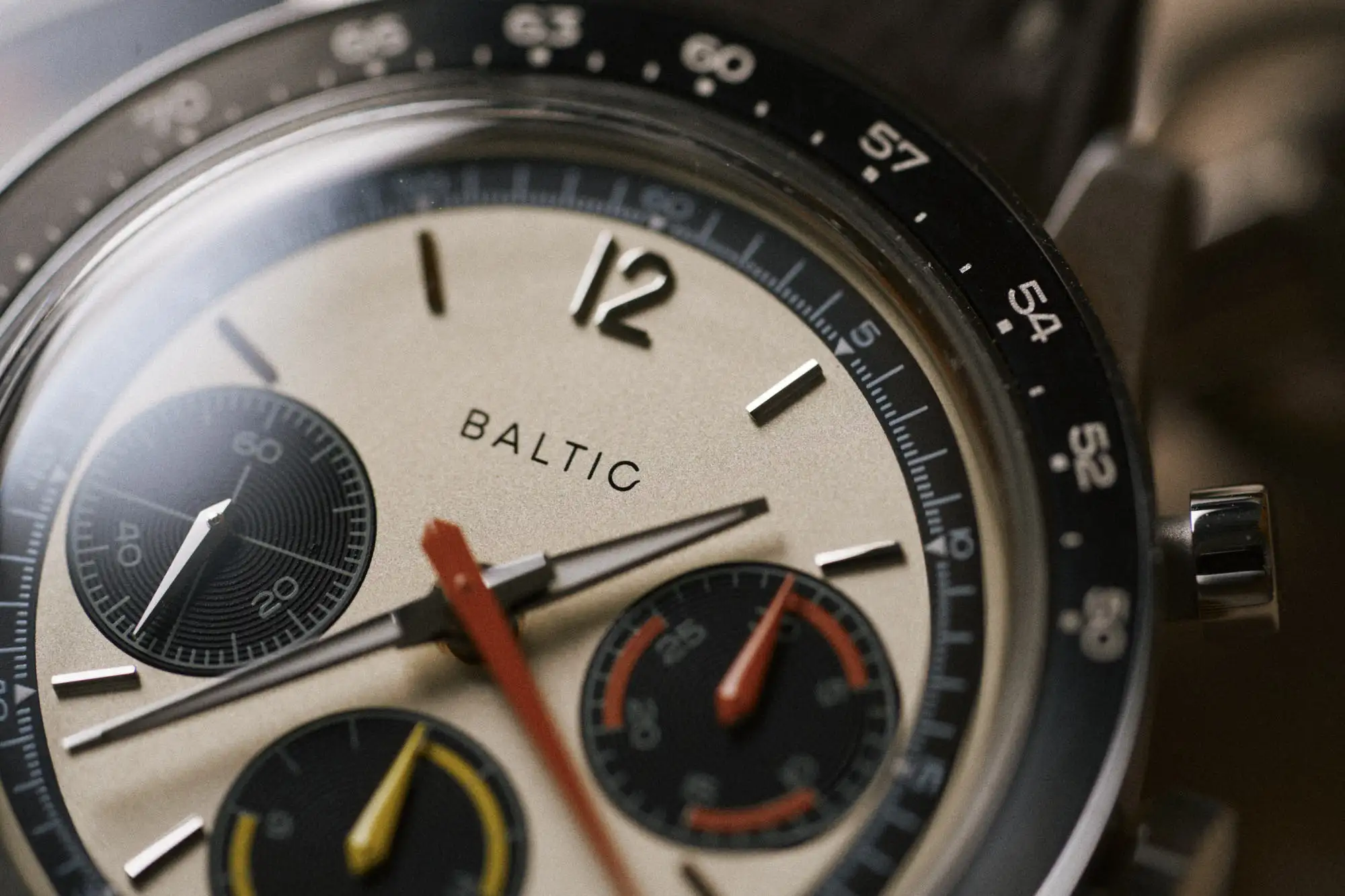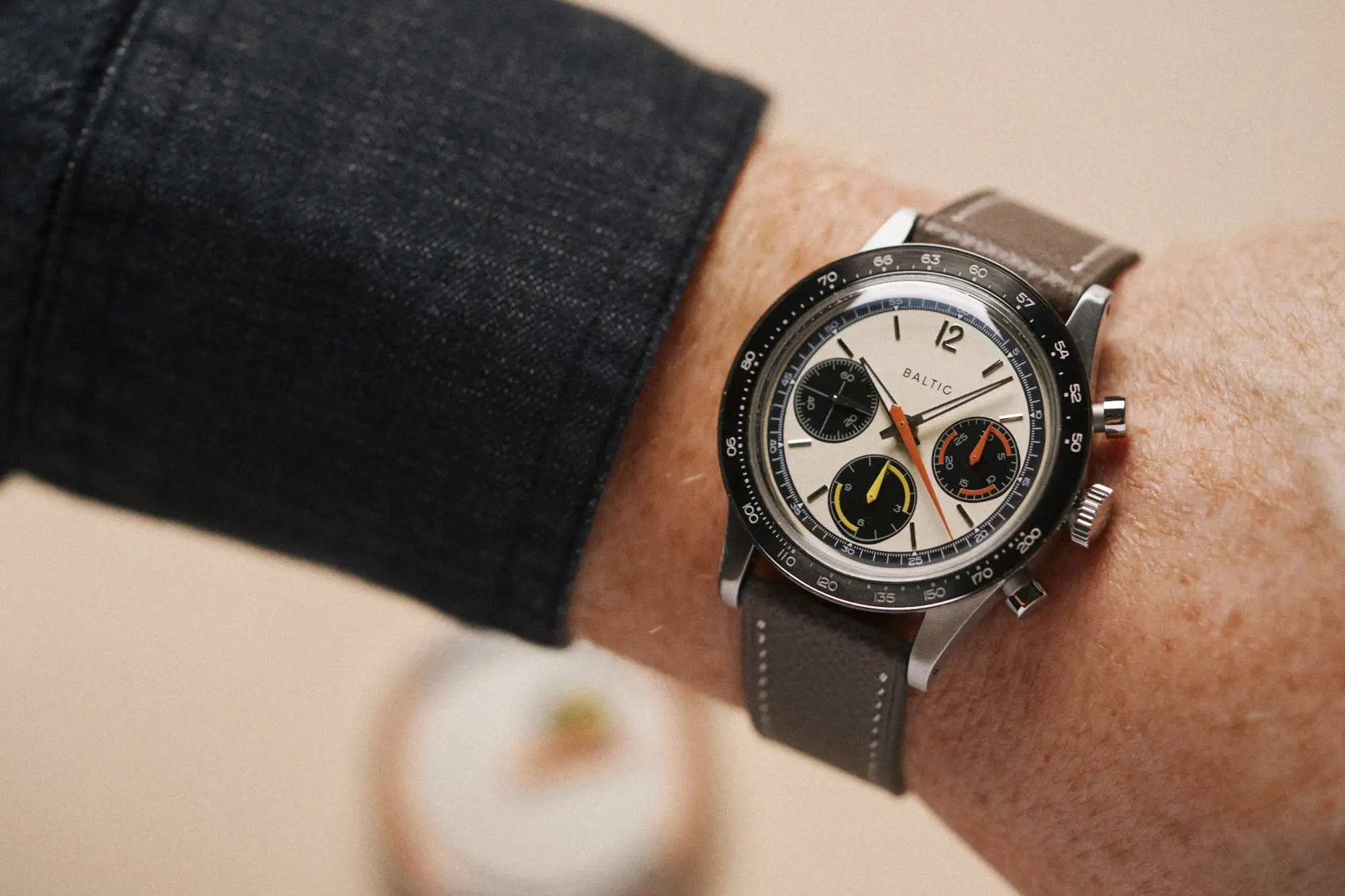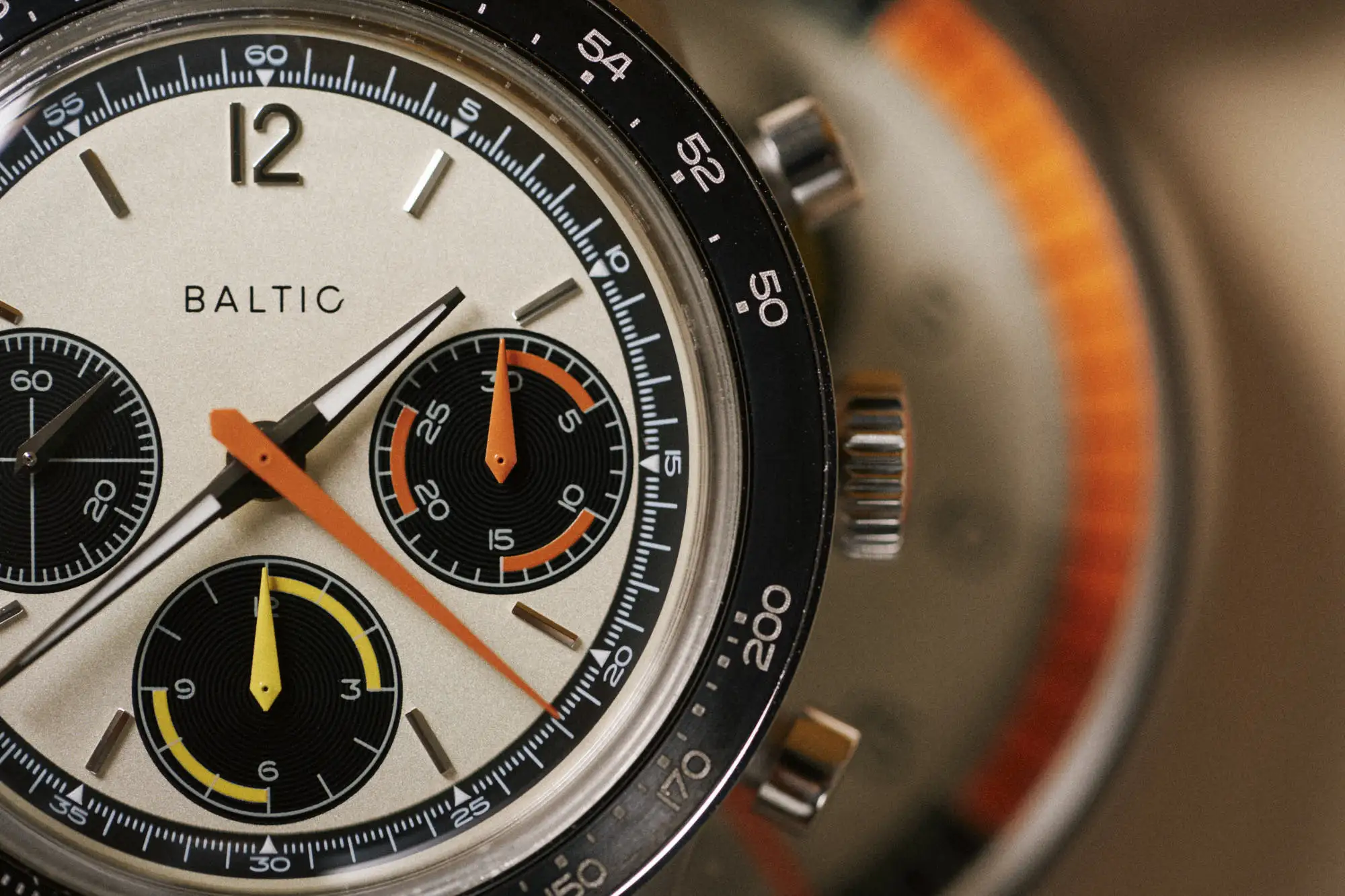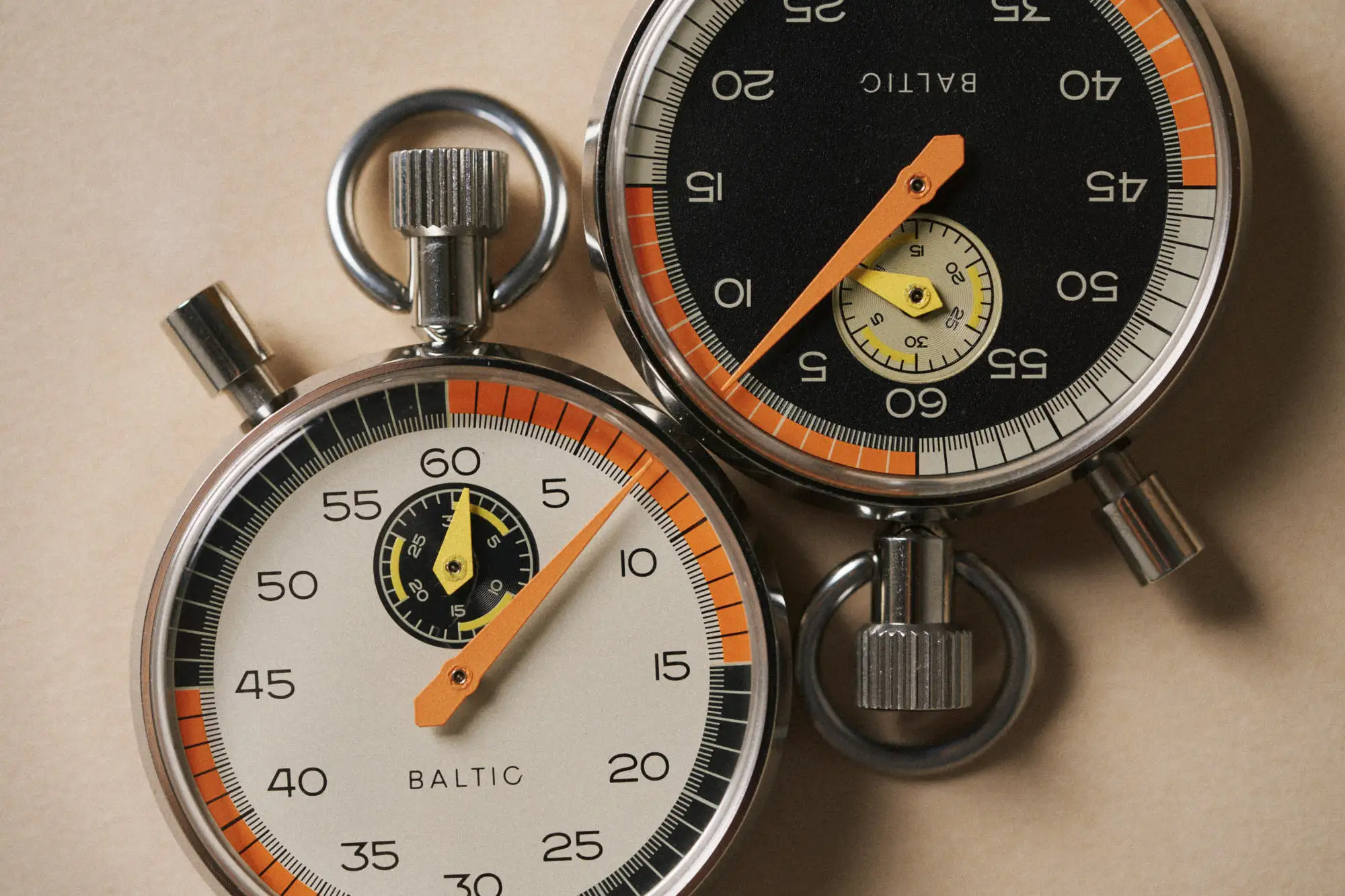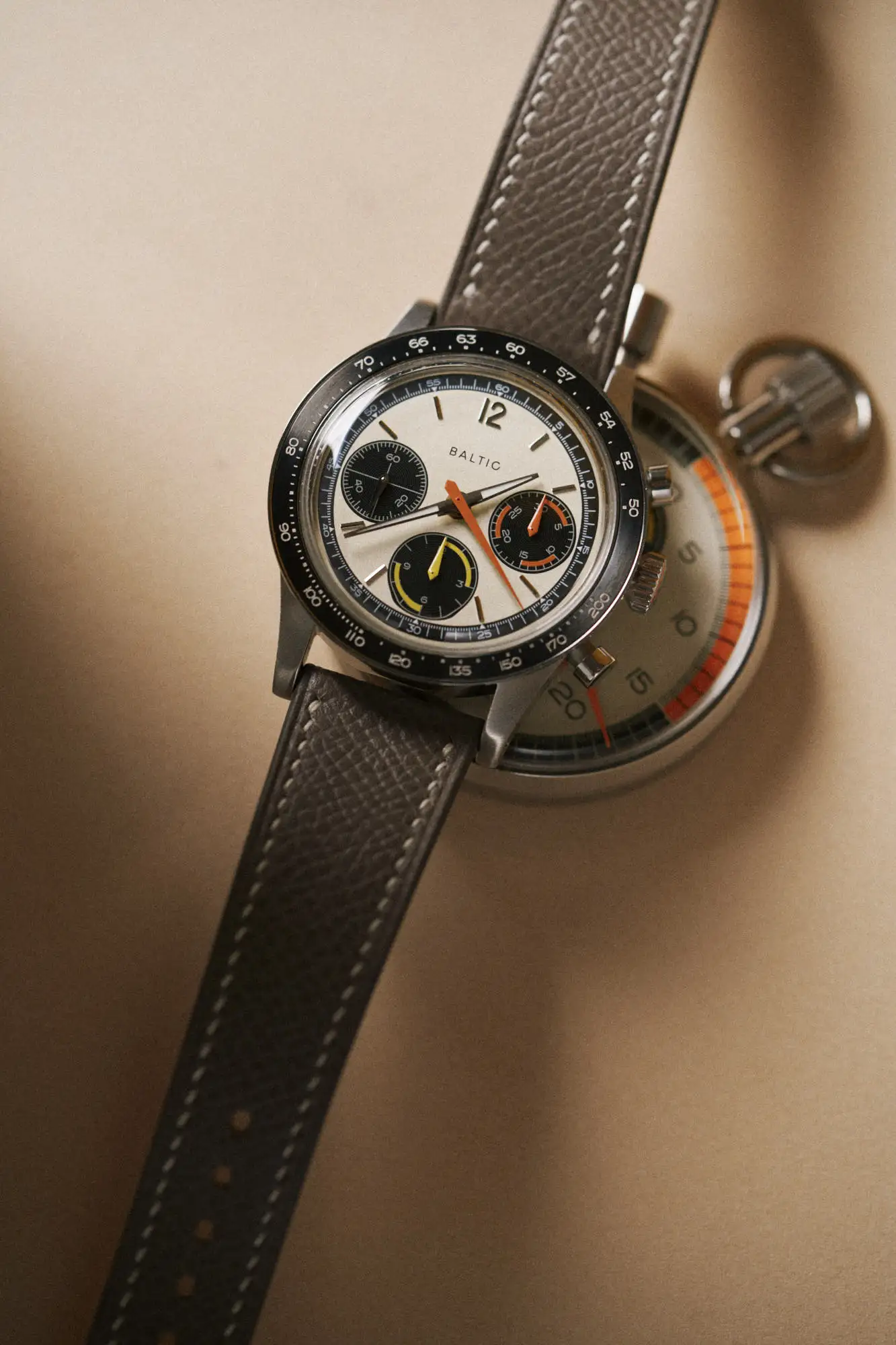Last week Baltic took the lid off its latest LE, a colorful chronograph called the Tricompax. Zach and I gave our immediate reactions right here, and since then we’ve had some time to get properly acquainted with the watch. Leading up to its commercial launch tomorrow, we’re bringing you a more in-depth hands-on with the Tricompax. This will focus on the watch alone, though the full kit includes a pair of flyback stopwatches as pictured.
I’ve never really thought of myself as a chronograph guy. I don’t seek them out or feel particularly compelled to own watches with this complication. Aesthetically, there’s a lot of components to be accounted for, and things rarely come together to achieve balance (to my eye). That said, they allow for more creative opportunities, and bring a level of engagement for the wearer that most other watches don’t. And when they work, they really work. Whether it’s the colors they use, the mechanical engineering they display, or the layout they employ, a great chronograph hits a bit differently than other watches. Maybe I am a chronograph guy?
The Baltic Tricompax is a watch that instantly brought a smile to my face. It relies on simple but effective visual codes that we often associate with spot watches of the ‘70s. This is not a throwback or vintage inspired watch, though. At least, it doesn’t read that way. The Tricompax opens a new chapter for Baltic’s visual identity, and if you’ve followed the brand over the years, you’ll know that’s something they don’t take lightly. They are clear about their inspiration, and what they’re trying to capture with their watches. This has led them to design watches akin to some of the all-time classics, but somehow distinct. The Tricompax, in my opinion, is their most mature offering to date in this regard.









 Featured Videos
Featured Videos




